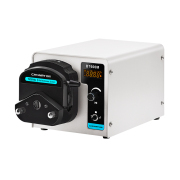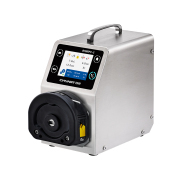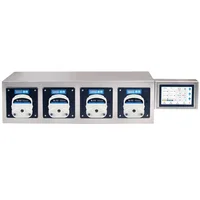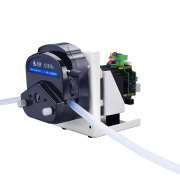Chonry Peristaltic Pump
Peristaltic Dispensing Pump
Peristaltic Dispensing Pump
Peristaltic pumps are useful in applications requiring the transfer of low-viscosity liquids. This type of pump is suitable for a wide variety of applications, from food and beverage processing to water treatment. They are easy to clean and maintain and are highly reliable. Some types even come with remote controls.
Peristaltic pumps come with a variety of features. They may vary in the number of rollers or cross-sections of the rotor. The size of the rotor and rollers will affect the flow rate and pulsation. The larger the diameter, the higher the flow rate. The number of rollers will also affect the flow rate and the life of the tubing. Some pumps feature dual-speed capabilities.
Peristaltic pumps have inherent properties that make them ideal for process and laboratory applications. Because of their gentle action, they are particularly suited to non-contaminating applications. Peristaltic pumps are easy to set up and calibrate and can be set to the desired fill volume in just a few minutes. Despite their simplicity, they provide high accuracy and reliability in a wide range of applications.
The BT100-1F peristaltic pump is designed for high-volume dispensing and is capable of generating flow rates between 200 nL/min and 500 mL/min. Its intelligent design provides a complete view of the dispensing task. It also features a touch-screen control panel for precise and efficient dispensing. It has a built-in memory to store 60 common filling modes and a dispensing counting feature. It also comes with an RS485 interface for external control.
A peristaltic dispensing pump uses peristalsis, a natural process used by many organisms. The process involves rollers that compress a tube and trap a body of fluid between them. The fluid is then transported through the tube to the pump outlet. The peristaltic pump can run continuously or index through partial revolutions.
Peristaltic pumps are ideal for chemical dosing. The tubing of a peristaltic pump should have a minimum gap between the roller and the housing. This gap affects the maximum squeeze of the tubing. The amount of squeezing affects pumping performance and tube life. If the squeeze is too small, the pumped medium will slip back. A high velocity slip back may lead to premature failure of the hose.
A peristaltic dispensing pump mimics the natural processes of bowel movement and is an ideal solution for applications requiring sterility and minimal cross-contamination. The peristaltic dispensing pump is a great choice for medical and surgical settings that require cleanliness.
0users like this.







